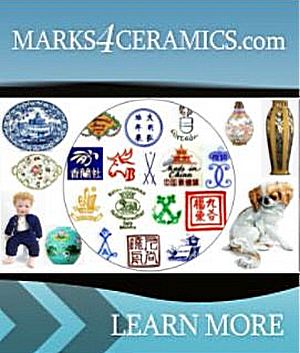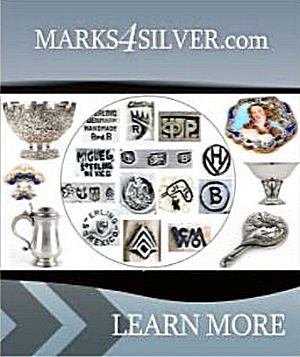TYPES OF PORCELAIN:
Hard Paste, Soft Paste, and Bone China

When discussing items made of fired clay, the broad term "Ceramics" is often used. This category is then further divided into several primary subcategories, including earthenware, stoneware, and porcelain. The main distinguishing factors between these three types of ceramics are the temperature at which they are fired in the kiln and the specific composition of their ingredients.
While the term "Pottery" technically encompasses all ceramic products, it is commonly used today to specifically refer to Earthenware, Stoneware (also known as Clayware), and Arts & Studio pieces. This usage separates Porcelain into its own distinct category within the ceramics industry.
From the late 17th century until the very early 20th century, chinaware, dinnerware, and tableware were primarily made of earthenware or stoneware (including Ironstone). However, since the mid-19th century until present times, the predominant material for manufacturing such items has been porcelain.
This article will focus on the various types of Porcelain.
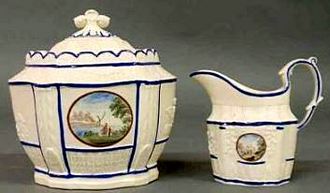
TRUE PORCELAIN (a.k.a. HARD-PASTE PORCELAIN)
A high-fired Ceramic ware that exhibits translucent properties and is composed of White Clay (Kaolin) and a type of Feldspathic rock (Petunse). Kaolin is refractory and binds a piece together while in the Kiln and Petunse fuses into a natural kind of glass that gives it its smoothness and brilliance. True or Hard Paste Porcelain is usually fired at 1450 °C. It allows for “tighter” modeling and more robust shapes, even in delicate or very thin designs. Most decorative Porcelain Figurines, Urns, Centerpieces etc are made using True or Hard Paste Porcelain of this type. This is the same type of Porcelain invented at Meissen and was the first close recreation of Porcelain coming from China at the time. In France, the term for Hard-Paste is Pâte Dure, and in Sevres specifically Porcelaine Royale. Hard (or High) Fired translates to Grand Feu in French.
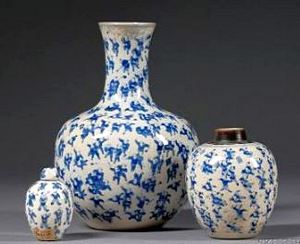
ARTIFICIAL PORCELAIN (a.k.a. SOFT-PASTE PORCELAIN)
Termed ‘soft’ because of its ability to be cut with a file (Hard Paste Porcelain cannot), this type of Porcelain is actually also composed of the same materials as Hard Paste, but is fired at a softer Temperature while in the kiln, at around 1200 °C. Because of this lower Kiln temperature, Soft Paste Porcelain tends to be more granular and porous since the component materials do not vitrify (fuse together) as is the case of Hard Paste Porcelain. Additionally, the surface is somewhat less white or brilliant and has an almost silky or marble-like feel to the touch. Some Collectors prefer this look, especially on human figurines, where it allows for a softer texture and a more life-like appearance on faces, hands etc. Historically, Soft Paste Porcelain was first made in Italy in late-16thC (Medici Porcelain), but its real revival was in mid-17thC France. In the UK, the first factory to make Soft Paste Porcelain was Chelsea (ca 1743). It is also known as Frit Porcelain in England, whereas in France as Porcelaine de France or Pâte Tendre.
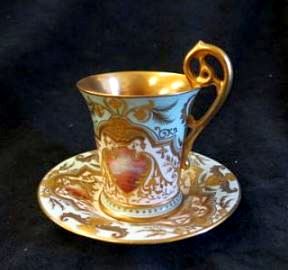
BONE CHINA
This is the same as Hard Paste Porcelain (Kaolin + Petunse), but with added Bone-Ash (ashes from burned animal bones, mostly cattle). Bone ash contains lime and phosphoric acid, which helps in fusing all of the ingredients and allows for a more stable final product, even at the lower temperatures required for Soft Paste Porcelain. In a manufacturing setting, this means less damage due to cracking in the Kiln and less waste or rejects, thus less cost. In Decorative Arts terms, it means that an object with at least 30 percent mixture of Bone Ash, can also achieve a similar brilliance and translucence, typically seen on Hard paste Porcelain, but at the lower costs of producing Soft Paste. Bone China was first introduced at the Bow factory in England in 1750 and was quickly imitated by Chelsea (1755) and Lowestoft and Derby (ca 1770). It is rarely produced in other countries of Europe or the US and is also known as English China.
Other than a true scientific analysis performed at a Lab, a quick and practical way to confirm if an item is made of a particular type of Porcelain is to examine an unglazed exposed or broken piece to determine how porous or granular its interior body is. As a quick rule of thumb, granularity means Soft Paste, whereas compact and fused means Hard Paste; Bone China is more brilliant than Soft Paste but less so than Hard Paste. Also, in general, Hard Paste Porcelain is the most durable of the three types, with Bone China coming second and Soft Paste third.
Finally, some other terms used for Porcelain include:
Soaprock or Soapstone Porcelain: Uses soaprock, a soft Steatite mineral that feels like soap, also called French Chalk
Biscuit (also called Bisque): Unglazed Porcelain (of all types) or Earthenware which has been fired only once. It has a distinct marble-like appearance, also
called Parian ware, and is used mostly for large or tall figurines and busts.
Unlock the true value
of your collection with our comprehensive research guides from identifying makers' marks to appraising all kinds of
antiques and collectibles.
Our up-to-date information will give you an accurate understanding of your items' worth. Don't miss out on this
valuable resource - visit our research tools today!
Search our price guide for your
own treasures



